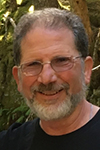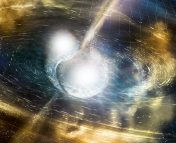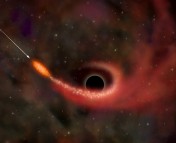In this series of posts, we sit down with a few of the keynote speakers of the 231st AAS meeting to learn more about them and their research. You can see a full schedule of their talks here!
From LOFAR to the SKA, we’re on the cusp of lighting up the radio sky in an unprecedented level of detail. In the era of large surveys, Lawrence Rudnick combines these efforts with observations of x-rays to study the fascinating dynamics of the intercluster medium.

Rudnick is a distinguished teaching professor, with a passion for outreach, based at the Minnesota Institute for Astrophysics. His plenary talk “The Stormy Life of Galaxy Clusters” will focus on the all-important characterisation of the intercluster medium.
As a physics student, Rudnick sampled many different areas of research, from condensed matter as an undergrad to building a radiometer to measure the clouds from the roof of the physics building in Princeton. His thesis, as Rudnick recalls, “was a complete failure” because it was “way, way ahead of its time.” Some forty years ago, Rudnick and his advisor David Wilkinson (recall the Wilkinson Microwave Anisotropy Probe — this was named after him) set out to measure the presence of an intergalactic medium by detecting fast radio bursts (FRBs). An important characteristic of FRBs is that their signal is dispersed, meaning the higher frequency components are detected first because of preferential slowing of lower frequencies. The amount of dispersion that occurs is dependant on how much intergalactic medium it has travelled through. However, Rudnick was unsuccessful in his search and had to wait some thirty years before the first FRB was discovered.
Moving on from studies of our own galaxy, Rudnick has now set his mind towards understanding much larger volumes of space — the very active intercluster medium (ICM). Characterisation of this medium enables a fascinating insight into the history of clusters, from their formation to how they’re continuing to accrete matter. Turbulence and shocks in the ICM generate “magnetic fields of strengths comparable to our own galaxy…but over megaparsec volumes,” which translates to a lot of energy, so what is amplifying these magnetic fields? “The second puzzle” as Rudnick notes, is “what accelerates particles to relativistic energies?” Thermal gas, which emits x-rays, is also where we tend to find synchrotron radiation — a common signature of fast-moving, relativistic particles in magnetic fields.
In the words of Rudnick, “find your passion” and “prepare to work hard.” As a student, it is sometimes hard to figure out what aspect of research you enjoy. Aside from “keeping your mind open,” Rudnick suggests it is important to “go to seminars, go to journal clubs and see what’s interesting out there.” Finding your passion will lead to a more enjoyable, and hopefully successful career, yet even the best sometimes feel like a fraud. This so-called imposter syndrome is a something most people, especially students, experience at some point in life, but Rudnick says “don’t worry. Even the people you admire thought they were also.”
Rudnick is clearly passionate about public outreach. Upon his arrival in Minneapolis, he quickly got involved with the local, library-based planetarium, so when it was torn down with the library in 2002, Rudnick endeavoured to realise the next one. This has been a huge project, but finally, some sixteen years later, equipment in the planetarium is being installed and its doors will open to the public next summer. Although it’s a constant and enormous amount of work, Rudnick finds it rewarding. “In this business, you have to do what you enjoy because life is too hard and if you’re not enjoying what you’re doing, you need to find another business which pays better and has better security.”
With the upcoming generation of radio surveys like LOFAR and SKA precursors, we’re starting to discover all kinds of new radio structures in the ICM — but “this is the tip of the iceberg.” Over the next 10 years, Rudnick believes that we are going to “to light up the ICM in new ways” and that in the future we will look back to now and realise “all they had was a glimpse of what’s going on.”
Make sure you catch Rudnick’s talk on Wednesday 11th January, 11:40 am at #AAS231!




